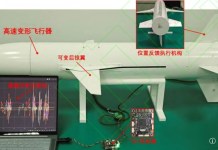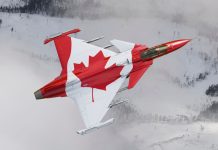At first, residents of Herriman city in Utah thought there was an earthquake as their houses were rattled by a loud bang, only to realize that it was America’s most advanced F-35 stealth fighters that had just flown over the town.
Will Beijing Follow Jaishankar’s Prescription To End Stalemate In India-China Ties?
In the evening of Monday (January 25) around 9.30 pm, people residing southwest of Salt Lake City in Herriman, Utah were left baffled regarding what exactly caused such high impacts, labeled ‘sonic booms’, around the region.
While US Air Force officials had notified the media that the F-35 fighters would be practicing night training starting from January 25 to 30, they later said that the reported booms did not come from the jets.

Social media was flooded with gossips and speculations about the source of that loud bang. However, Patrick Wiggins, Utah’s NASA ambassador, who was at the Stansbury Park Observatory when those first sounds came across, said that the booms were indeed caused by the fighter jets.
“My cat was snoozing in a bag, a paper bag actually. Boom! Boom! And she scoots out of the bag and just stands there like what was that?
“And I’m going, ‘Ooo! Meteor!’ because that’s what will occasionally happen if you get a meteor close enough, it will make a nice sonic boom. But when it kept happening, I’m going ‘No, it must be the Air Force’,” Wiggins said.
We can confirm there was no earthquake.
One possibility that may be a cause for the reports of “booms” people have heard/felt: https://t.co/arORc0hZdh
— UUSS (@UUSSquake) January 26, 2021
So, why was the test carried out over Utah? Well, it is because the state is home to Hill Air Force Base, considered the US Air Force’s second-largest base by population and geographical size.
The Air Force base is responsible for operating the 2.3-million-acre Test and Training Range located in Utah’s west desert and is the largest block of contiguous, special-use airspace within the continental US.

The base had announced that its 388th Fighter Wing would be carrying out night combat training exercises. Lieutenant Colonel Yosef Morris said, “Our mission with the F-35s involves deploying the aircraft quickly to anywhere in the world and then being ready to employ those aircraft in combat very soon after we arrive in theater. So that mission may require us to fly at night.
“As a matter of fact, a way that the aircraft is designed, and many of the missions that we do, we prefer to fly at night in actual combat because it makes us harder to see.”
It was this particular exercise that led to the F-35 fighters conjuring up the phenomenon which is known as ‘sonic boom’.
What is a sonic boom?
When an object moves faster than the speed of sound, which is about 343 meters per second at sea level, a sonic boom is produced.
The effect is similar to waves created by the bow of a ship as it moves through the water, with the fighter creating air pressure waves as it travels through the atmosphere.
When the fighter jet or any aircraft surpasses the speed of sound, pressure waves combine, forming shock waves that travel forward, dropping sonic booms along the aircraft’s path.
In the case of fighter jets, the audible “boom” in the sonic boom is concentrated between 0.1 and 100 Hz and lasts around 100 milliseconds. The intensity is the greatest under the flight path and weakens with the distance created as the aircraft continues to move forward.
As per the altitude at which the aircraft is traveling, sonic booms reach the ground between a period of two seconds and 60 seconds after the plane has flown overhead.
But for a sonic boom to reach the ground, the aircraft’s speed relative to the ground must be greater than the speed of sound at ground level. So, if the F-35s did indeed create the sound booms, then the fighters must be flying at a ridiculously fast speed.
The speed of sound at an altitude of around 30,000 feet is about 1,078 km per hour, so in order for the boom to be audible on the ground, the fighter should have to fly at a speed of at least 1,207 km per hour (Mach 1.12, where Mach 1 equals the speed of sound).
This in turn shows the true power of the F-35 fighters, which are considered the most advanced fighter jets on the planet.
Manufactured by US aerospace giant Lockheed Martin, the single-seat, single-engine, all-weather stealth multirole F-35 Lightning II can perform strike missions as well as provide electronic warfare and intelligence, surveillance, and reconnaissance.
The development of the fighter was principally funded by the US with additional funding arriving from NATO, the United Kingdom, Australia, Italy, Norway, Denmark, the Netherlands, Canada, and formerly Turkey.
Follow EurAsian Times on Google News




